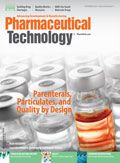Hype vs. Health
Ebola Virus Disease (EVD) is a severe, often fatal disease that is transmitted human-to-human through bodily fluids.
Ebola virus disease (EVD), which first appeared in Africa 38 years ago, generally was perceived by people in developed nations as a scary, deadly, but distant illness far removed from their lives.
EVD is a severe, often fatal disease that is transmitted human-to-human through bodily fluids. According to World Health Organization (WHO) data, nearly 2000 people in Africa were infected with EVD from 1976 through 2013 with an average fatality rate of 50%. The latest outbreak began in March 2014 in Guinea and spread to Sierra Leone, Liberia, Senegal, and Nigeria. As of Oct. 14, WHO reported 9216 confirmed, probable, or suspected cases of EVD worldwide and 4555 deaths.
When the first patient with EVD walked into a US hospital, the facility was not prepared; two nurses treating the patient were infected. Despite initial missteps, federal and local officials contained the outbreak to that single hospital. But it was too late to contain overreaction by the public, press, and politicians, which spread much faster and wider than the disease itself and distracted public attention from real health threats.
While the afflicted nurses battled the disease, politicians lined up to criticize the reaction of the federal government. Demonstrators outside the White House called for a halt to flights from West Africa. Schools closed. In one extreme example of undue caution, a school in Maine placed a teacher on a 21-day leave after she attended a conference in Dallas in mid-October, even though she had no contact with any people, transportation, or facilities involved in three EVD cases diagnosed in that area.
The 2014 outbreak clearly illustrates there is a need for effective vaccines and therapies for EVD; a handful of vaccines and treatments are in early development and testing stages. Questions remain, however, about the bio/pharma industry’s ability or desire to develop and produce therapies or vaccines cost-effectively.
Viruses here and now
While EVD generated alarm, two other health issues presented serious medical challenges for US patients.
Between mid-August and mid-October, the Centers for Disease Control (CDC) and state public health laboratories confirmed that 825 people, mostly children, in 46 states and the District of Columbia had respiratory illnesses caused by enterovirus D68 (EV-D68); seven patients died. Enteroviruses and rhinoviruses cause millions of respiratory illnesses in children each year; however, the 2014 outbreak of EV-D68 was much greater than that reported in previous years. There are no vaccines to prevent EV-D68.
Influenza is an annual threat to the health of the general public and patients with compromised medical conditions in particular. The October to March flu season is just underway and CDC estimates that 5-20% of Americans get the flu each year. While most people recover, CDC estimates that between 3000 and 49,000 Americans die from the flu or its complications every year.
The flu virus is contagious and, unlike EVD, can be spread through airborne transmission (a cough or sneeze) and by someone infected with the virus who is not showing symptoms. Unlike EVD and EV-D68, however, vaccines to protect against the flu are readily available; CDC says the vaccine reduces the chance of getting the flu by approximately 60%. Still, less than half of the US population gets innoculated.
Count me among those lining up for an annual flu shot. The vaccine does not come with a guarantee that I will avoid the flu, but a shot of prevention is worth more than a pound of paranoia.

About the Author
Rita Peters is the editorial director of BioPharm International.

Drug Solutions Podcast: A Closer Look at mRNA in Oncology and Vaccines
April 30th 2024In this episode fo the Drug Solutions Podcast, etherna’s vice-president of Technology and Innovation, Stefaan De Koker, discusses the merits and challenges of using mRNA as the foundation for therapeutics in oncology as well as for vaccines.
Drug Solutions Podcast: Gliding Through the Ins and Outs of the Pharma Supply Chain
November 14th 2023In this episode of the Drug Solutions podcast, Jill Murphy, former editor, speaks with Bourji Mourad, partnership director at ThermoSafe, about the supply chain in the pharmaceutical industry, specifically related to packaging, pharma air freight, and the pressure on suppliers with post-COVID-19 changes on delivery.
Pharmaceutical Tariffs Are Imminent: How Industry is Bracing for Impact
April 16th 2025On April 14, 2025, the Trump Administration launched a national security-driven investigation into pharmaceuticals, a move that will likely result in tariffs being placed on pharmaceutical drugs, ingredients, and other components that are imported from outside of the United States.